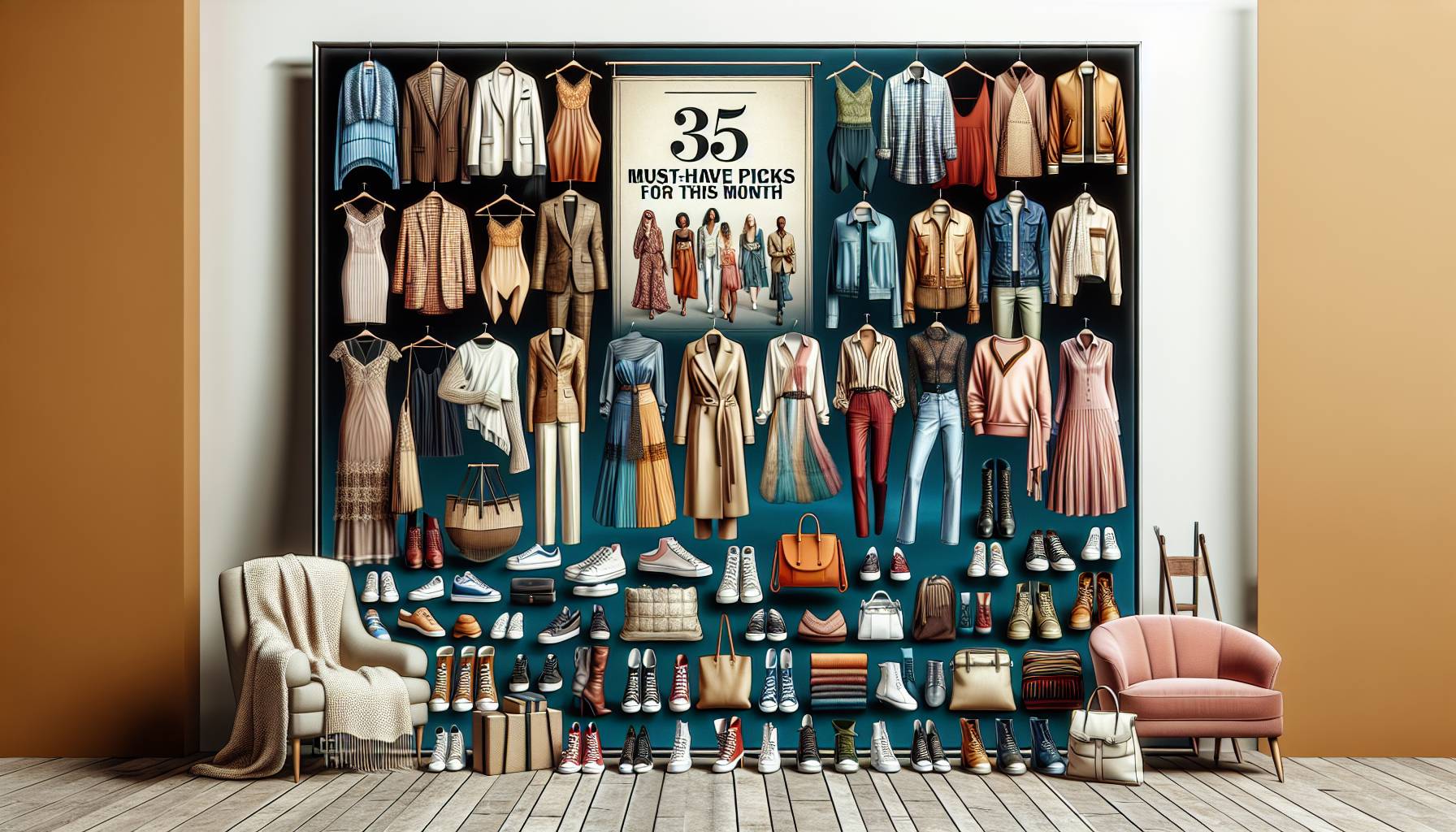Exploring fashion’s environmental impact
The fashion industry is a significant contributor to environmental degradation, with its complex supply chains and rapid production cycles. The environmental impact of fashion is multifaceted, encompassing everything from water pollution to carbon emissions. In Australia, where the fashion market is vibrant and diverse, the effects are particularly noticeable.
One of the primary concerns is the use of water in textile production. Cotton, a staple in many garments, requires vast amounts of water to grow. This demand places a strain on water resources, especially in regions already facing scarcity. Additionally, the dyeing and finishing processes often involve toxic chemicals that can contaminate local waterways, affecting both ecosystems and communities.
Another pressing issue is the carbon footprint of the fashion industry. The production and transportation of clothing contribute significantly to greenhouse gas emissions. Fast fashion, characterized by its rapid turnover of styles and low-cost production, exacerbates this problem. The emphasis on quick production and disposal leads to increased waste, with many garments ending up in landfills.
In response to these challenges, there is a growing movement towards sustainable fashion. Designers and brands are exploring innovative materials and production methods that minimize environmental impact. For instance, some are turning to organic cotton, recycled fabrics, and biodegradable materials. Others are implementing closed-loop systems that recycle old garments into new ones, reducing waste and conserving resources.
Consumers in Australia are also becoming more conscious of their fashion choices. There is a rising demand for transparency in the supply chain, with shoppers seeking out brands that prioritize ethical and sustainable practices. This shift in consumer behavior is encouraging more companies to adopt environmentally friendly practices.
While the journey towards a more sustainable fashion industry is ongoing, the efforts being made are a step in the right direction. By addressing the environmental impact of fashion, we can work towards a future where style and sustainability go hand in hand.
The intersection of fashion and controversy
Fashion has always been a reflection of societal values and cultural shifts, but it is also a realm where controversy often thrives. In Australia, as in many parts of the world, fashion can be a battleground for debates on cultural appropriation, body image, and ethical production practices.
Cultural appropriation is a contentious issue within the fashion industry. Designers sometimes draw inspiration from Indigenous Australian art and traditional garments, sparking debates about respect and ownership. The line between appreciation and appropriation can be thin, and the fashion industry is frequently called upon to navigate this delicate balance with sensitivity and respect.
Body image is another area where fashion intersects with controversy. The industry has long been criticized for promoting unrealistic beauty standards, which can have a profound impact on self-esteem and mental health. In recent years, there has been a push for greater diversity and inclusivity on the runway and in advertising. Australian brands are increasingly featuring models of different sizes, ages, and ethnic backgrounds, challenging traditional norms and encouraging a broader definition of beauty.
Ethical production practices are also a hot topic. The fashion industry’s reliance on low-cost labor in developing countries has led to scrutiny over working conditions and fair wages. Australian consumers are becoming more aware of these issues and are demanding greater transparency from brands. This has led to a rise in ethical fashion labels that prioritize fair trade and humane working conditions.
These controversies highlight the complex role fashion plays in society. While it can be a source of creativity and self-expression, it also has the power to influence and reflect societal values. As the industry continues to evolve, it must grapple with these challenges and strive to create a more inclusive and ethical future.
Behind the scenes with industry experts
Delving into the world of fashion reveals a complex tapestry woven by the expertise and insights of industry professionals. In Australia, where fashion is both a cultural staple and a booming industry, the perspectives of designers, supply chain experts, and models provide a unique lens through which to view the evolving landscape.
Machine Dazzle, a renowned designer known for his avant-garde creations, offers a glimpse into the creative process that drives fashion innovation. His work challenges conventional norms, pushing the boundaries of what fashion can be. By experimenting with unconventional materials and bold designs, he inspires a new generation of designers to think outside the box and embrace creativity without limits.
Aparna Mehta, a supply chain expert, sheds light on the intricate logistics that underpin the fashion industry. Her expertise highlights the importance of efficiency and sustainability in production processes. In Australia, where the demand for locally produced and ethically sourced garments is rising, her insights are invaluable. She emphasizes the need for transparency and accountability in supply chains, advocating for practices that reduce environmental impact and promote fair labor conditions.
Journalist Amanda Mull provides a critical perspective on the fashion industry’s influence on consumer behavior and societal trends. Her analysis of fashion’s role in shaping public discourse and cultural norms is particularly relevant in the Australian context, where fashion is both a personal expression and a reflection of broader societal values. Her work encourages consumers to question the status quo and consider the implications of their fashion choices.
Supermodel Cameron Russell offers an insider’s view of the fashion world, drawing attention to the industry’s ongoing efforts to embrace diversity and inclusivity. Her advocacy for body positivity and representation resonates strongly in Australia, where the push for more inclusive fashion is gaining momentum. By sharing her experiences and championing change, she inspires others to challenge traditional beauty standards and celebrate individuality.
Together, these industry experts provide a comprehensive understanding of the forces shaping fashion today. Their insights not only illuminate the challenges and opportunities within the industry but also inspire a vision for a more innovative, ethical, and inclusive future in fashion.
exploring the impact of fashion on daily life
Fashion is more than just clothing; it’s a powerful force that shapes our daily lives in subtle yet profound ways. From the moment we wake up and decide what to wear, we’re engaging with an industry that influences our choices, our self-expression, and even our confidence. In Australia, where diverse climates and cultures converge, fashion becomes a unique tapestry of personal and collective identity.
Our wardrobes are a reflection of who we are and who we aspire to be. Each piece of clothing tells a story, whether it’s a vintage find that speaks to nostalgia or a cutting-edge design that pushes the boundaries of style. The choices we make in fashion can empower us, allowing us to present ourselves to the world in a way that aligns with our values and aspirations.
Moreover, fashion is a social language, a way to communicate without words. It can signify belonging to a particular group or standing out as an individual. In the workplace, the right outfit can convey professionalism and competence, while in social settings, it can express creativity and personality.
In Australia, where the fashion scene is vibrant and ever-evolving, the impact of fashion on daily life is particularly pronounced. From the laid-back beachwear of the Gold Coast to the sophisticated urban styles of Melbourne, fashion is an integral part of our cultural landscape. It’s a dynamic industry that not only reflects societal trends but also drives them, influencing everything from gender norms to environmental consciousness.
As we navigate our daily lives, fashion remains a constant companion, shaping our experiences and interactions. It’s a testament to the power of clothing to transform not just our appearance, but our entire outlook on life.
the intersection of fashion and sustainability
In recent years, the fashion industry has been at the forefront of a global conversation about sustainability. As a fashion expert from Australia, I see firsthand how this dialogue is reshaping the industry. The intersection of fashion and sustainability is not just a trend; it’s a necessary evolution that addresses the environmental impact of our clothing choices.
Australia, with its unique ecosystems and biodiversity, has a vested interest in sustainable practices. The fashion industry here is increasingly embracing eco-friendly materials and ethical production methods. Designers are turning to organic cotton, recycled fabrics, and innovative materials like hemp and bamboo to reduce the carbon footprint of their collections.
Moreover, the concept of a circular fashion economy is gaining traction. This approach encourages the recycling and upcycling of garments, extending their lifecycle and reducing waste. Brands are launching initiatives to take back old clothes, repurpose them, and create new pieces, thus closing the loop in the fashion supply chain.
Consumer awareness is also driving change. Australian shoppers are becoming more conscious of the origins of their clothing and the conditions under which they are made. This shift in consumer behavior is prompting brands to be more transparent about their supply chains and to adopt fair labor practices.
However, the journey towards sustainability is not without its challenges. Balancing style, affordability, and eco-friendliness requires innovation and commitment from both designers and consumers. Yet, the potential benefits are immense, not only for the environment but also for the future of fashion itself.
As we continue to explore this intersection, it’s clear that sustainability is not just an add-on but a core component of modern fashion. In Australia and beyond, the industry is poised to lead the way in creating a more sustainable and stylish future.

